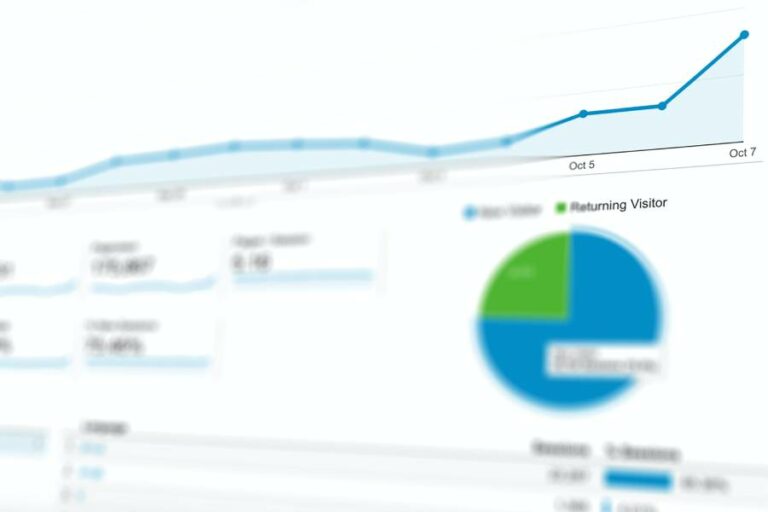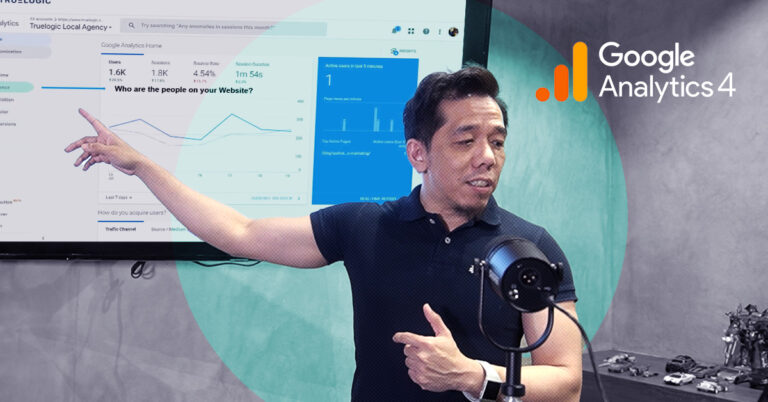Improve your conversions with audience analysis

(Updated Dec. 16, 2019)
People mostly skip audience analysis when in reality it’s a crucial element to a focused marketing campaign. Every time somebody visits your website, Google pulls data from those visits which you can use to analyze your audience and make smarter marketing plans.
Google Analytics and Google Search Console are instrumental to every kind of online business. Together they provide a valuable view of who is visiting your website, which can help you optimize for conversion.
You don’t even have to be an expert nor would you have to attend SEO training classes just to get this data. More importantly, you can save a valuable amount of money by learning about your audience. There is a subset of the market who are already looking for you: you just need to start focusing your efforts on them, instead of throwing money to the wind on ads that may not be reaching your target market.
Who Visits Your Website?
Google Analytics (GA) is a powerful tool that acts like a surveillance camera for your website. How old are your visitors? GA knows. How long do they stay on, looking at your product pages? GA knows the answer to that, too.
Because of the tremendous amount of data it provides, GA can be a little intimidating and confusing to use at first. You may find it difficult to decide where to look to get the most important data. Start with these three major metrics, and you’re on your way to getting to know your audience better.
Audience
Say you own a hip Italian restaurant. Since you’ve opened you’ve been targeting college students and young professionals in your area through social media. You’re getting tons of likes and comments, but these social media interactions aren’t translating into calls for reservations or foot traffic to your restaurant. Look at your GA and go to the Audience tab; this section will tell you who your audience really is with the following metrics.
-
Age and Gender
You might be thinking your typical restaurant visitor profile consists of young men and women aged 16 to 25, only to look at your analytics and discover that 30- to 45-year old females are your most frequent visitors. This could be the reason you’re not getting the phone bookings or walk-ins you want.
-
Location
While the majority of your visits will likely come from the Philippines, you might find out that 15 percent of your audience comes from the US and another 10 percent from Europe. Don’t ignore these percentages.
Find out why you’re attracting visitors from these regions. Perhaps you were mentioned by a foreign travel magazine article as one of the best restaurants to try in the Philippines. With data about your audience’s locations, you can write blogs or copy geared specifically towards them.
Most importantly, determine if you really want traffic coming from places you did not intend to reach, or if you’re wasting money on marketing campaigns that targeting the wrong people in the wrong locations.
-
Device
Insights about device used to access your website will give you more idea about your audience.
If the majority of your website visitors use mobile phones, it’s highly possible that you have an audience who value mobility or being able to get information they need as quickly as possible.
You may also see what operating system the phone uses: is it an Android or iOS device?
You can dive deeper by checking the browsers used. For instance, if many visitors use the old version of Internet Explorer, this could mean your audience is not that techy.
They may feel overwhelmed and exit your website if it’s too complicated to navigate.
Behavior Insights
While the audience overview tells you about who’s visiting your website, Google Analytics’ behavior tab can tell you how they interact with your website content.
You’ll find out which pages are the most popular and how long visitors stay on those pages. In other words, it tells you what content works and what doesn’t—which can help you optimize your website better.
Another interesting feature of this section is the Behavior Flow report. It tells you how visitors traverse your site: from the page they first land on, to the page they browse next, to the last page they go to before exiting. This data can help you see the level of user engagement with your content and help you identify potential content gaps.
The Behavior Flow can answer questions like:
● Which product page sends the most users to checkout after filling their cart?
● Which of your transactional pages have high drop-off rates?
● Is there a specific page that triggers your highest bounce rate, i.e., causing your readers to leave after reading just one page?
Learn to interpret the data to understand how your readers behave on your site.
Acquisition Tab
When you know how users land on your website, you can create strategies that are suitable for them.
Say a large portion of your audience was directed to your website because they typed the phrase “what insurance to buy for my children.” Your website should contain information relevant to that phrase (or what we call a long-tail keyword) so your readers will stay and read content useful to them and convert them from readers into customers.
This is where Google Analytics’ Acquisition tab comes in.
Explore this tab, and you’ll find out more about your audience’s “trip” to your website: whether they discovered it through an external link, a paid ad, a social media post, or organic search engine results.
If, for instance, most of your visitors came from Google, your digital marketing campaign may become more effective if you double your efforts on SEO or PPC ads. The data from the Acquisition tab can also help you better understand what your audience is looking for, whether it’s information, a product, or something else.
Want more data on how your users found your website via Google? Confirm your findings from GA’s Acquisition tab with data from another free tool: the Google Search Console (GSC).
How Did Your Audience Discover You?
Ever wonder what keywords people used exactly to find your website? Google Search Console is your friend. It is especially useful for SEO-driven work to promote your website.
This tool collects data and generates reports that give insight on the behavior of users who found your site via Google using specific keywords, which the report provides.
It also allows you to monitor your website’s presence on Google’s search engine results pages (SERPs). GSC’s user-friendly platform allows you to analyze performance of every page on your website.
Sign up for a Search Console account and add your website to it. Take note: Google will require you to prove you own the site before adding it to your Google Search Console account.
You may verify your ownership either by uploading a special HTML file to your site, or adding a DNS record in your domain name, or through other verification methods permitted by Google.
Once everything is set up, here are some of the things you can do with Google Search Console.
1. FIND WHAT common keywords people use to find you
GSC can show you the common keywords that bring users from organic SERPs to your website. This list of keywords also comes with other important metrics, including:
a. Impressions, or the number of times your website shows up on SERPs for a certain keyword;
b. Clicks, or the number of times someone has clicked on your link after searching a keyword;
c. Click-through rate (CTR), or the percentage of clicks your website receives, divided by the impressions or the number of times it shows up on SERPs for a keyword;
d. Your webpage’s position or current Google ranking for a certain keyword.
Explore this list, and you’ll have a better grasp on how your website performs for every keyword.
This could help your campaign in a lot of ways. You can sharpen your SEO campaign targeting based on the performance of these keywords. Use this data also to improve your content marketing efforts and make your PPC campaign more targeted and profitable.
2. Identify the most popular pages, including those with great potential to rank as well
Based on the metrics above, as well as the number of backlinks and internal links, GSC can tell you which page or content on your website performs excellently. This gives you an insight into the kind of keywords and topics your target audience is most interested in. But you shouldn’t stop here.
It’s also a great idea to scour pages that don’t rank highly or don’t get a lot of clicks but get a lot of impressions. Perhaps you can add content to these pages to make them more relevant and engaging.
Think of it this way: your website is like a restaurant. The storefront—signage, exterior design, and more—looks awesome. People passing by can’t help but stop in front of the restaurant to check out the menu on display, but after flipping through the menu, they walk away. Perhaps they didn’t see anything interesting; they weren’t impressed.
The good news is you can enhance the “menu” from design to actual content.
The same goes for your website. Locate all pages that you can optimize further to get more clicks, leads, or conversions.
3. See where your visitors are coming from
Similar to GA’s Acquisition tab, GSC can help you see where your visitors are coming from. The Search Traffic tab covers metrics for user location, device used, and external links.
These links, especially if they’re from reliable websites, can increase your site’s domain authority in the eyes of Google.
Also, under the Search Traffic tab, click the tab labeled “Links to Your Site” and look for the “How your data is linked” section.
You will see here the anchor text or keywords that other websites often use when linking back to yours. Use this data to improve your keyword research further.
What to Do with All That Data?
Google Analytics and Google Search Console are a godsend to any digital marketer. You get to know your audience better—who they really are, how they behave online, how they discover you.
But all this valuable data is worth nothing unless put to good use. Here are a few actionable tips:
1. Redefine YOUR audience targeting.
Now that you know more about your audience, you’re well-equipped to redefine your audience targeting. Combine your GA reports with GSC data, and you can come up with more specific market segmentation. Optimize your marketing efforts with these redefined segments in mind.
2. Determine any low-hanging fruit.
When collecting data, don’t focus only on pages/content that perform the best. Look out for any “low-hanging fruit”: keywords, topics, or pages that can bring immediate, positive results if you use the right strategy.
Remember, data about keywords often used, devices used, and behavior flow can help you determine which audience is at what stage of the buyer’s journey.
Analyze all of this before picking out a strategy, whether it’s boosting your paid media campaigns or implementing stronger local SEO efforts.
3. Refine Pay Per Click efforts using GA and GSC data.
Among various digital marketing campaigns, PPC ads bring instant results. Pick out the right keywords and bidding strategy, set a suitable budget, and you can drive high-quality leads to your website.
Refine your PPC campaign with data insights you get from GA and GSC. You might be getting more leads by spending less on your campaign.
The great thing with PPC is that you can control your spending and monitor its performance in real-time. You can test your new strategies based on GA and GSC data on PPC. If they work, adopt these strategies for your SEO, social media, and other campaigns as well.
4. Continue to track the data to see whether recent efforts have paid off.
User data can show up on Google Analytics and Google Search Console in 24 to 48 hours. Whenever you run new ad or content campaigns on your website, make sure to monitor the results on the free Google tools we’ve just presented to you.
The digital marketing industry is ever-changing. Don’t get left behind with a “set and forget it” mindset. Test different strategies and make constant adjustments to keep your online stream of customers steady.
Remember these key basic metrics in Google Analytics and Google Search Console. They house valuable data which are useful to optimizing for conversion.










